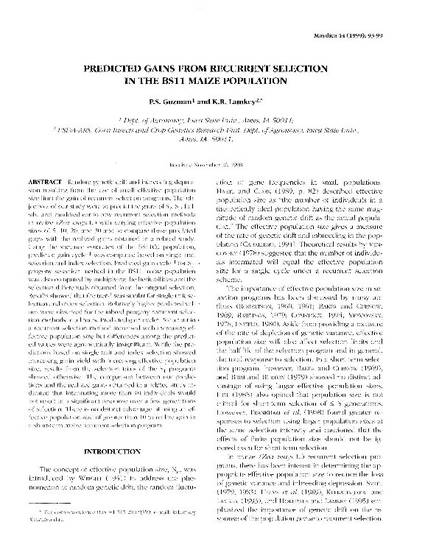
Random genetic drift and inbreeding depression resulting from the use of small effective population size limit the gain of recurrent selection programs. The objectives of our study were to predict the gains of S2, S1, full-sib, and modified-ear-to-row recurrent selection methods in maize (Zea mays L.) with varying effective population sizes of 5, 10, 20, and 30 and to compare these predicted gains with the realized gains obtained in a related study. Using the variance estimates of the BS11C0 population, predicted gain cycle-1 was computed based on single trait selection and index selection. Predicted gain cycle-1 for S1-progeny selection method in the BS11 maize population was also computed by multiplying the heritabilities and the selection differentials obtained from the original selection. Results showed that the trend was similar for single trait selection and index selection. Relatively higher predicted values were observed for the inbred progeny recurrent selection methods in all traits. Predicted gain cycle-1 for a trait in a recurrent selection method increased with increasing effective population size but differences among the predicted values were agronomically insignificant. While the predictions based on single trait and index selection showed increasing grain yield with increasing effective population size, results from the selection trials of the S1 programs showed otherwise. The comparison between our predictions and the realized gains obtained in a related study indicated that intermating more than 10 individuals would not result in a significant response over a few generations of selection. There is no distinct advantage of using an effective population size of greater than 10 to realize gain in a short-term maize recurrent selection program.
Available at: http://works.bepress.com/kendall_lamkey/33/

This article is published as Guzman, P.S. and K. R. Lamkey. 1999. Predicted gains from recurrent selection in the BS11 maize population. Maydica 44:93-99.